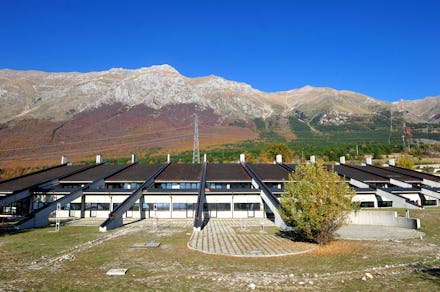Strange "ghostly" particles found inside a mountain in Italy could unlock the Sun's mysteries

Researchers believe they may have discovered direct evidence of a particle that plays a part in fueling massive stars that are bigger than our Sun. These particles, called CNO neutrinos, were detected in an underground laboratory located in the mountains of Italy by an international team of physicists called the Borexino Collaboration. The team presented their observations last month during the Neutrino 2020 conference and are currently awaiting peer-review of their study before publication. If confirmed, their findings could help scientists around the world expand their understanding of how the Sun works.
The Sun is powered through two different nuclear fusion processes—the proton-proton chain (p-p chain) and the CNO (carbon, nitrogen, oxygen) cycle. Our Sun primarily relies on the p-p chain for its energy, but researchers hypothesize that much larger stars use the CNO cycle for their energy instead. Both processes fuse hydrogen into helium, which creates a great amount of energy for the Sun's core, and releases different kinds of neutrinos.
The neutrinos that are emitted during the processes are 'ghostly' particles that zip through the air at the speed of light. They don't usually interact with masses—billions of them are passing through your body right now—making them very hard to detect. To make things more difficult, scientists learned the hard way that there are different types of neutrinos that all require different calibrations for detectors to detect. Before they knew better, scientists were only picking up a portion of the neutrinos all around us, not all.
Building machines that are sensitive enough to spot neutrinos isn't easy, but a detector housed in the Gran Sasso Laboratory in Italy has managed to produce excellent results for the Borexino Collaboration. In 2014, the Borexino team was the first to detect neutrinos emitted from the p-p chain.
The current detector is a round tank full of a liquid that flashes whenever electrons within it interact with neutrinos. The flash is a burst of energy, which presumably comes from CNO neutrinos. Borexino's CNO neutrino discovery can help other scientists answer questions about the Sun, such as what elements it's made of.
"With this outcome, Borexino has completely unraveled the two processes powering the sun," physicist Gioacchino Ranucci told Live Science. The team is pretty confident about their findings, calculating that the probability they detected something different was a 1 in 3.5 million chance. But other scientists believe that number is still too high for their liking, and are hoping to see the experiment continue to make further observations.